ECOLEADERS’ NEWSLETTER
 Photo by Matthew Cavanaugh
Photo by Matthew Cavanaugh
NEWS OF THE MONTH
GLOBAL NEWS
What are native plants? What are pollinator gardens? Learn about their importance and contribution to the ecosystem, along with our very own native New England flowers!
CARBON EMISSIONS
2023 almost being guaranteed the hottest year recorded, climate change and invasive species, and an overhaul in the environmental regulation process!
NATIVE POLLINATOR GARDENS
Many people are wondering if we should reduce carbon emissions using trees or machines The answer to this is below Both trees and machines have a role to play in pulling out carbon emissions, but what is best for our Earth?
How serious is the situation of food waste now? Where does NMH food waste go? Explore the global issue of food waste and learn what step you or any business can take using the Food Recovery Hierarchy model Learn about NMH's work in making sure food waste become compost
FOOD WASTE
Northfield Mount Hermon November 2023
SUSTAINABILITY SPOTLIGHTS The showcase of sustainability role models at NMH!
GLOBAL NEWS
by Amy Vongvasin
SCAN THE QR CODES TO LEARN MORE!
2023 IS ALMOST GUARANTEED TO BE THE HOTTEST RECORDED YEAR
This past October had the hottest-ever global temperature recorded, and coupled with the ‘cumulative warming’ of the past few months, indicates with high certainty that 2023 will be the warmest year in history These changes are not surprising, given the tremendous amount of greenhouse gasses emitted by humans, and could lead to more intense weather events like severe droughts and hurricanes occurring in more expansive areas What’s more, warming is almost expected and more records will be broken in the coming future Thus, “the need for action to stop planet-warming emissions is urgent ”


STUDY SUGGESTS THAT CLIMATE CHANGE COULD FOSTER INVASIVE SPECIES

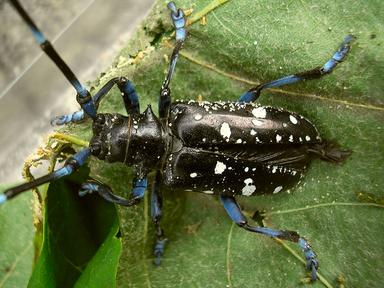
A new study published by the Chinese Academy of Sciences suggests that extreme weather caused by climate change affects native species much more than non-native or invasive species Invasive species tend to have higher tolerance, adaptation rates, and reproduction rates, allowing them to rapidly expand their population in foreign environments Climate change could even help them expand their population as it wipes out their competition: the native species More invasive species means more economic loss for society According to a report, invasive species introduced to ecosystems globally have damaged natural habitats and food systems, causing more than $423 billion in economic losses yearly.
BIDEN FINALIZES SIGNIFICANT OVERHAUL IN FEDERAL REGULATIONS
The Biden Administration has revised the government spending programs' assessment of the cost and benefits of new regulations surrounding climate change, taxes, disaster aid distribution, etc The new guidelines were aimed to better encourage climate change regulations and more effectively address poverty This change puts more focus on the advantages of decreasing future economic harm caused by global warming, thus justifying the increased spending to regulate the issue However, it is criticized by some economists as the changes may lead to federal officials imposing on American economic activities, and some called the new assessment method outdated
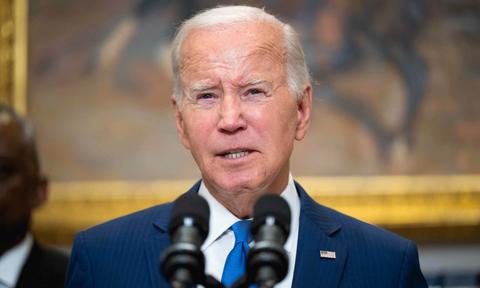

1
Photo by Umass Amherst of an Asian Longhorned Beetle,an invasive species in New England
Photo by Saul Loeb
Photo by Phys Org
BUZZ-WORTHY BLOOMERS: NATIVE
POLLINATOR GARDENS
by Amy Vongvasin
WHAT ARE NATIVE PLANTS???
They’re are plants that have naturally existed in a particular area for thousands of years and have formed symbiotic relationshipswiththelocalnativewildlifethroughtheirco-evolution Theyserveasessentialhabitatsandfoodsources, offering native nuts, seeds, and fruit for mammals and nectar for pollinators Their sustainability stems from their continuedadaptationtotheregion’ssoil,moisturelevels,andweatherpatterns,minimizingtheirneedformaintenance Moreover,theyalsoprovideastrongrootsystemtopreventsoilerosion,absorbexcessrainwhennecessary,andplay avitalroleinimprovingthebiodiversityoftheecosystem Simplyput,they’reabsolutelynectar-iffic!!
On the other hand, non-native plants are introduced to an area by humans and often become invasive species. They tendtoreducethebiodiversityofnativecommunities,competingforresourcesanddisruptingthenaturalhabitats.
WHAT ARE POLLINATOR GARDENS???
Pollinator gardens are a special kind of garden modeled to grow nectar and pollen-producing plants, attracting pollinators such as the 5Bs: butterflies, beetles, birds, bats, and most importantly, bees! Ranging from small flower patches to expansive landscapes, these gardens contain a diverse array of plants, housing various pollinating animals The most effective type of pollinator gardens consists of native plants, as they are the most compatible with the region and are best suited to support the pollinators they evolved alongside Planting native species not only encourages the health of ecosystems but also protects endangered local species

garden!
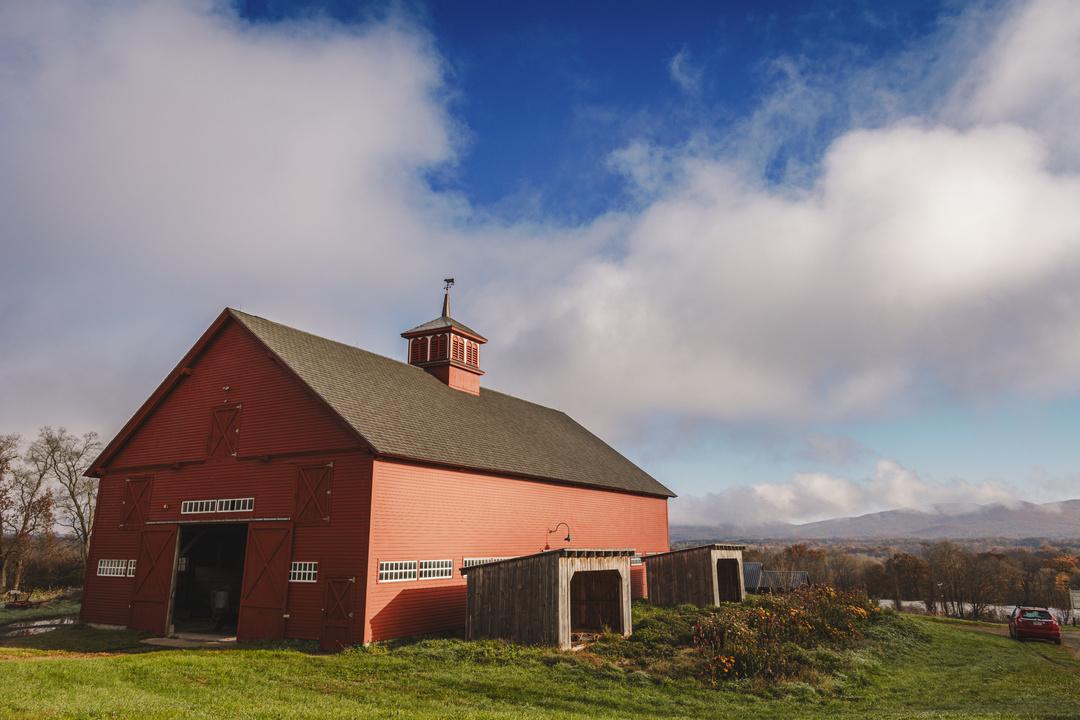

2
our current
Photos by Matthew Cavanaugh
OUR NATIVE POLLINATOR GARDEN (SOON TO BE POLLINATOR STRIPS)
As shown in the previous page, NMH’s native pollinator garden is down by the barn, but it will likely be moved closer to the vegetable fields to create a pollinator strip this spring. The garden consists mostly of perennials, which are plants that live for more than two years and regrow each spring, they are planned to be taken out and replaced with annual flowers, which need to be replanted every year Emma Lindale works on the farm and is currently taking care of it Also, since all the flowers are native, they require little maintenance
SOME NATIVE FLOWERS FROM THE GARDEN!!!

A Monarch Butterfly on a Tropical Milkweed: Milkweeds are the ONLY host plant that monarchs would lay eggs on! They’re extremely important to the butterfly species population!!
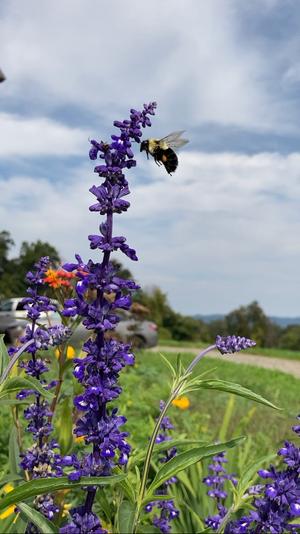
A Carpenter Bee on a Perennial Salvia: Salvias can be found naturally growing in many parts of the world, though 50 species are native to North America


A Carpenter Bee on a Black-Eyed Susan: Black-Eyed Susans are pioneer plants; they are the first flowers to grow in an area after any extreme damage/disaster!
FUN FACT!!! Pollinators tend to be more active in warm weather so it’s unlikely to see any bees during cloudy days or in the winter, so perhaps visit the garden (soonto-be strip) when spring time rolls around!!
REFERENCES


Emma Lindale extra information received from:
Maeve Tholen
Adam Mazur
3
pictures from the amazing Adam Mazur
picture by Matthew Cavanaugh
SHOULDCARBONEMISSIONSBEPULLED OUTOFAIRBYTREESORMACHINES?
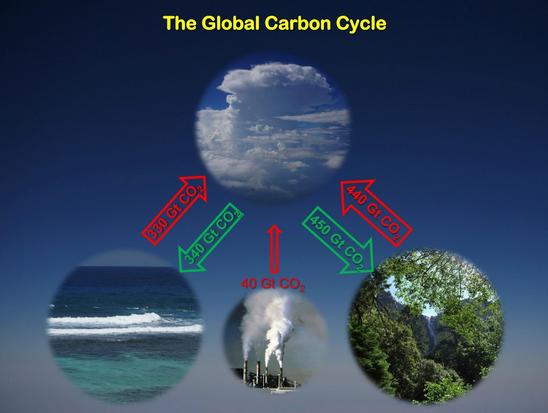 by Jane Namusisi
by Jane Namusisi
In the battle against climate change, finding effective ways to reduce carbon emissions levels in the atmosphere is important. Two promising methods for this are growing trees and employing machines to capture carbon. While trees naturally absorb carbon dioxide through photosynthesis, carbon capture machines can remove greenhousegasesfromtheatmospheredirectly
Trees are nature’s solution to condensing carbon dioxideemissionslevels.Throughphotosynthesis, trees absorb carbon in the atmosphere Forests act as carbon sinks storing carbon in their trunks, branches, and leaves Planting trees can absorb significant amounts of carbon, while also providing other environmental benefits such as habitatpreservationandsoilstability
Oneoftheadvantagesofutilizingtreesistheirwidespreadavailability Treescanbeplantedinvariouslocationsandare a renewable resource Additionally, tree planting initiatives have the potential to involve communities, raising awareness and fostering a sense of community or environmental stewardship They are also aesthetic, enhancing the beauty of our surroundings
Despite trees’ benefits, relying solely on them has some limitations It takes years for trees to mature and reach their full carbon-absorbing potential. Also, there is a limit to the amount of land available for tree planting. This can make it challengingtoachievethescalerequiredtosignificantlyimpactglobalcarbonlevels
Carbon capture machines, on the other hand, are an innovative solution that directly captures and stores carbon emissionsfromINDUSTRIALACTIVITIES.Thesemachinescanbestrategicallyplacednearlargesourcesofgreenhouse gas emissions, such as power plants Capturing these carbon emissions before they are released into the atmosphere reducesglobalwarming.
Carboncapturemachineshavetheadvantageofbeingefficientandeffectiveindirectlyremovingcarbondioxidefromthe air Theycanbescaleduptohandlelargevolumesofemissionsandhavethepotentialtoreducegreenhousegaslevels Theirimplementationcanalsocreatenewjobopportunitiesintheemergingfieldofcarboncapturetechnology
Inthefightagainstclimatechangebothtreesandcarboncapturemachinesoffervaluablewaystoreducecarbonfromthe atmosphere. Treesplayavitalroleinthequesttocombatclimatechangeandprotectourplanetforfuturegenerationsby providing a natural and renewable method while carbon capture machines offer a more direct and scalable approach To effectively combat climate change, trees should be the key. Through planting more trees and reducing deforestation, we canmaximizeeffortstoreducecarbonemissionsandworktowardsamoresustainablefuture
Photo by Wallpaper Flare
4
Picture by NASA
FOOD WASTE: GLOBALLY & NMH
by Kelvin Cheung
GLOBAL FOOD WASTE
As food becomes more affordable over human development, people stop cherishing the food they consume, believing that having enough food is just a small part of their everyday life. Food is produced excessively in many countries, never seeming problematic. However, what happens when there is an excessive amount of affordable food? People stop valuing what is on their plates and caring about whether they are consuming food efficiently Every year, 17 percent of total food

production worldwide is wasted The number has been slowly increasing since 2014 In 2019, for example, 931 million tonnes of food, 17 percent of total food available to consumers, was thrown into waste bins The weight is equivalent to weights carried by 23 million fully loaded 40-tonne trucks, enough to circle Earth 7 times if lined up bumper to bumper This data seems especially alarming when global food production is enough to feed 8 billion people, but more than 8 million people still go hungry daily What should we do to reduce our waste and reduce the loss of healthy, edible food?
FOOD RECOVERY HIERACHY

The U.S. Environmental Protection Agency developed the Food Recovery Hierarchy model to advise food businesses and individuals in taking recommended actions to prevent and divert wasted food The model is an inverted pyramid that ranks six actions based on their preference level The first step is to reduce the surplus food produced from the source so food would not be wasted If the food is produced but not consumed, it should be donated to institutions such as food banks for people who need it
Food scraps and other waste products can be diverted for industrial use or animal food Composting, though still not widely practiced, is not as preferred as the previous option. Though convenient, sending food waste to landfills is the least preferred option. Looking only at the United States, only 5% of the wasted food was composted in 2019. We still have a long way to go in achieving even the easiest step of reducing food waste– putting food waste into a separate compost bin
5
Photo by Wallpaper Flare
Photo by U.S. Environmental Protection Agency
Photo by Madgetech Marketing
WHAT DOES NMH DO??
Most of you know that NMH has a compost bin at the bussing station. All of our food waste goes into the compost bin. Nevertheless, ever wonder where the food waste goes afterward? This might be your question every time you bus your plates, and we have the answer. The NMH food waste goes to Martin's Farm Compost and Mulch, a local business in Greenville that collects food waste from institutions like NMH and converts it into various types of compost These composts will then be sold to local customers like home growers, greenhouse growers, and commercial farmers In other words, all the food waste NMH produced is converted into compost that provides nutrition to the local soil
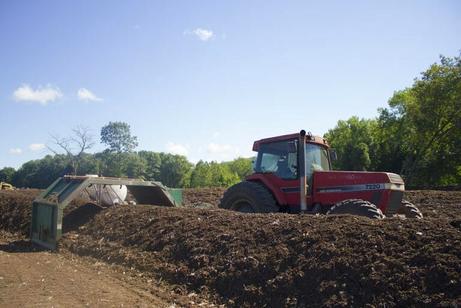

Though there are many ways we can explore to reduce the amount of food waste in the first place or divert food waste to NMH's own sustainability, NMH is still sustainable in sending food waste to be converted into compost Knowing where the food waste in the compost bin goes, remember not to throw ice cream wrappers or any noncompostable materials into the compost bin when you bus your dish. The best way to help solve the global issue of food waste is to consider how much we can finish every time we line up to obtain food from the main serving You can always go for a second plate, but you cannot put the food you have not finished into the serving.

Scan this QR code to check out Martin’s Farm Compost and Mulch!


6
Photo by Wallpaper Flare
Photo by Center for EcoTechnology
Reference from : 1 UN, 2 Green Worldwide US REFERENCES
Poster by Amy Vongvasin
WHAT’S UP WITH THE ECOLEADERS?
On top of the weekly meetings, here are some we did recently:
Ecoleader Bookclub!!!
Ecoleader Monthly Book Club is finally here! Club members will be reading books on sustainability issues and the climate crisis, in which each book will be discussed The current book is Fashionopolis by Dana Thomas, and there will be snacks at the meeting Come join us and have fun! Feel free to hop in and start reading any coming books you find interesting. These discussions will help us learn more about sustainability issues. Contact Payton Bonang or any Ecoleaders if you have questions or want to know more. You can also fill out the interest form with the QR code below, and stay tuned for future emails!
What’supwithCJC?!
by Kelvin Cheung & Jane Namusisi
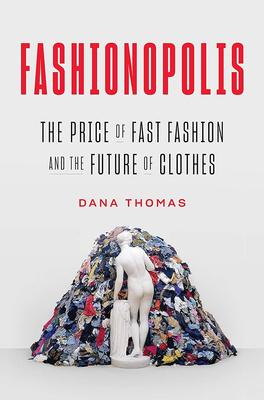

scan this QR code to fill out an interest form to join Payton’s club!!!
Before Thanksgiving break, three of the Ecoleaders led a CJC meeting that discussed both activities we have done beforeandeventswewillbedoingthisyear.AssomeCJCmembersalsoparticipatedinthetwoclimatesummits,the EcoleaderssharedwhattheylearnedfromthevariousworkshopsandhowNMHcoulddomoretofightclimatechange CJCmembersgettheearliest,first-handinformationaboutcomingeventsandhavethefirstpickinparticipatinginthose events If you would like to learn more about how to be involved in any sustainability work, stay tuned for emails from Ecoleader.Moreopportunitiesarecomingup,suchastheGreenCupChallenge,foryoutohelporparticipate.
YCANSummit
On the 16th of November, the Ecoleaders and five student volunteers left campus at 7:45 am on Monday with special permissiontoattendtheYouthClimateSummithostedbytheYouthClimateActionNowatSpringfieldMuseums Wehad
many discussions about the roles of an advocate, organizer, rebel, and helper in combat climate justice and heard many experiences from other participants Multiple workshops also included Lens on Traditional Ecological Knowledge, Tools for Actions, Levers for Change, and Lens on Scientific Ecological Knowledge: Climate Change. Many broaden our horizons and give us new perspectives in climate justice work. We then did a group activity on the Green in which participants danced with the indigenous dancers. The most rewarding part of the workshop was a brainstorming session at the end of the summit All NMH participants gathered and discussed what can be done more at school in organizing work that helps combat climate change

7
LNC’s fridge after cleaning!
(continuing from the previous page)
Fridge Cleaning Project
During the week before November Break, when everyone was packing their luggage an getting ready to leave campus for a long break, the Ecoleaders took on a project: we visite almost every dorm on campus and helped clean your respective dorm fridge We ha compost buckets and recycling bags to sort all the food we cleaned All unlabeled, expire or spoiled food was composted, and its containers were washed and recycled Spec shoutout to LNC for having a clean and neat fridge, which we took zero effort to clean!

SUSTAINABILITY SPOTLIGHTS!
JOE LATIMER

 by Kelvin Cheung
by Kelvin Cheung
Joe is often known as Rapper Joe for his superb rapping skills on campus However, Joe is known for another role, the Fridge-Cleaning Helper Joe. Three years ago, the Ecoleaders began the Dorm Fridge Cleaning project and started helping each dorm to clean their fridge It looked like an initiative the Ecoleaders took solely, but Joe actually proposed the idea He suggested that the Ecoleaders could help clean the messy fridge situations in various dorms and ensure that no food would be left over for break and rot.
The result was obvious: we adopted the idea and completed the project Joe has also been a three-year helper on the project He offers to lend us compost bins and assist us in carrying them from the dorms to the dining hall, knowing that they are heavy He has helped with this project three years in a row already We would not have had such a clean fridge for November Break without his initial proposal and help Shout out to Joe’s assistance and idea!
SILAS AND WIL
Silas and Wil were walking around Blake during an ordinary school day when they spotted McDonald's trash scattered around the building There was so much burger wrapping paper, used and unused sauce, napkins, and straw packages everywhere Instead of waiting for them to be picked up by someone else, Silas and Wil did it for the community
They gathered everything into a bag and threw it into the trash can during their free time and for somebody else. If you did anything using public space, please clean up after yourself and return a nice and neat space to the community. Kudos to Silas and Wil for keeping our school clean!!
SPOTLIGHT
SUSTAINABILITY SPOTLIGHT
SUSTAINABILITY
#1:
#2:





9 REACH US AT ecoleaders@nmhschool org SUBMIT ANY QUESTIONS, IDEAS, OR CONCERNS!!!
REFERENCES
Photo by Matthew Cavanaugh
Layout by Amy Vongvasin
 Photo by Matthew Cavanaugh
Photo by Matthew Cavanaugh
















 by Jane Namusisi
by Jane Namusisi












 by Kelvin Cheung
by Kelvin Cheung




